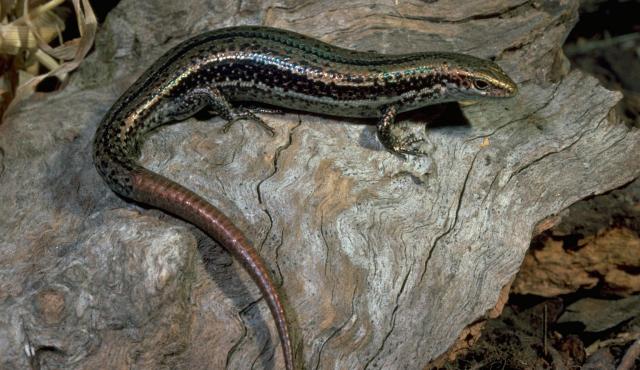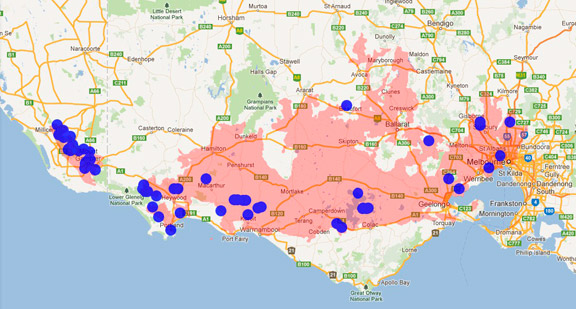A range of teacher professional learning programs will be developed to accompany the Biodiversity of the Western Volcanic Plains online outreach...

Southern Grass Skink
Pseudemoia entrecasteauxii
Viviparous (live young). Females give birth to a maximum of 8 live young late in summer. Active by day. Males change colour during the mating season.
| Details | Description |
| Type | Reptile |
| Group | Lizard |
| Other Common Names | Tussock Cool-skink |
| Identifying Characteristics | |
| Distinctive Markings | Dark stripe down back. |
| Diet | Carnivore, small invertebrates. |
| Habitat | Open grassy woodlands amongst the tussock grasses. Able to climb onto rocks and logs for basking. |
| Native Status | Native to Australia |
| Taxonomy | |
| Phylum | Chordata |
| Class | Reptilia |
| Order | Squamata |
| Family | Scincidae |
| Genus | Pseudemoia |
| Species | entrecasteauxii |

Distribution maps indicate current and historic locations where species have been sighted.
Source: Atlas of Living Australia
| Conservation Status | |
| DEPI Advisory List | Not listed |
| FFG Act | Not listed |
| EPBC Act | Not listed |
The conservation status of species is listed within Victoria and Australia.
The Department of Environment and Primary Industry (DEPI) Advisory List consists of non-statutory advisory lists of rare or threatened flora and fauna within Victoria.
The Flora and Fauna Guarantee Act 1988 (FFG Act) lists threatened species in Victoria. Under the Act, an Action Statement is produced for each listed species.
The Environment Protection and Biodiversity Conservation Act 1999 (EPBC Act) is the Australian Government’s key piece of environmental legislation, listing nationally threatened native species and ecological communities.



